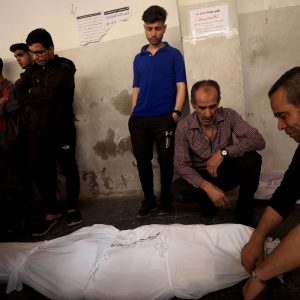Poisoning of schoolgirls in Iran snowballs into major public health issue
TEHRAN, Iran (AA) — Hundreds of schoolgirls have been hospitalized in different cities across Iran since November last year in what has been described as a wave of a mysterious illness.
Though the exact number of students affected by the poisoning is yet unknown, a senior lawmaker on Wednesday put the figure tentatively at “nearly 900.”
Shahriar Heidari, a member of the Iranian parliament’s internal security and foreign policy commission, cited a “reliable source” as saying that nearly 900 schoolgirls had been poisoned in different cities so far, as reported by local media.
From Qom to other cities
The first cases of this mysterious illness were reported in November last year, when at least 18 schoolgirls were transferred to a hospital in the central Iranian city of Qom.
The students complained of various symptoms including nausea, headaches, breathing problems, coughing and body pain. It followed similar incidents in other girls’ schools in the city.
Iran’s Health Minister Bahram Einollahi visited the city in mid-February and said many samples from schoolgirls admitted at a local hospital were taken for testing at the Pasteur Institute in Tehran.
In the latest incident reported by local media last week, at least 15 schoolgirls were admitted to a hospital in Qom after complaining of respiratory problems.
From Qom, the wave gradually spread to other cities, sending shockwaves across the country.
Reports emerged on Wednesday about the poisoning of students at 11 girls’ schools in the northern city of Ardabil “after smelling gas or something similar.”
A report by a state-run news agency said that at least 400 schoolgirls were admitted to hospitals and medical centers in Ardabil with symptoms of poisoning, with 302 later discharged.
Dr. Ali Mohammadian, President of the Ardabil University of Medical Sciences, told the state radio that most students were in “good condition,” while at least 5% of them had severe symptoms.
There have been similar reports from other cities as well, including Kermanshah in western Iran.
While the cause is still shrouded in mystery, Iran’s Deputy Health Minister Younes Panahi indicated earlier this week that the poisoning could be deliberate, aimed at stopping girls from going to school.
Panahi was quoted by local media as saying that the poisoning was caused by “chemicals” and that the symptoms were not contagious, while ruling out any external causes.
“After the poisoning of several students in Qom, it became clear that people wanted all schools, especially girls’ schools, to be closed,” Panahi told a news conference in Mashhad.
Investigations underway
Amid the rising number of poisonings, President Ebrahim Raisi on Wednesday ordered a time-bound investigation into the issue.
Addressing a Cabinet meeting in Tehran, Raisi ordered Interior Minister Ahmad Vahidi to find the root cause of the mysterious poisoning “as soon as possible.”
He also urged the Health Ministry, Information Ministry, and other related departments to assist the Interior Ministry in investigating the case that is now snowballing into a grave public health issue.
Later in the day, Vahidi convened a press conference and dismissed local media reports about some students being afflicted by paralysis due to poisoning and added that no arrests had been made so far.
Speculation is rife that parents fear sending their children to schools in some cities as the number of cases continues to surge.
In an interview with a local news agency on Thursday, lawmaker Homayoun Sameyehnajafabadi urged parents to “not prevent” their wards from going to school, calling the poisoning of schoolgirls a conspiracy to “create terror in the society.”









